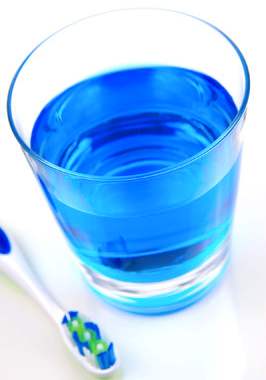- MENU
- HOME
- SEARCH
- WORLD
- MAIN
- AFRICA
- ASIA
- BALKANS
- EUROPE
- LATIN AMERICA
- MIDDLE EAST
- United Kingdom
- United States
- Argentina
- Australia
- Austria
- Benelux
- Brazil
- Canada
- China
- France
- Germany
- Greece
- Hungary
- India
- Indonesia
- Ireland
- Israel
- Italy
- Japan
- Korea
- Mexico
- New Zealand
- Pakistan
- Philippines
- Poland
- Russia
- South Africa
- Spain
- Taiwan
- Turkey
- USA
- BUSINESS
- WEALTH
- STOCKS
- TECH
- HEALTH
- LIFESTYLE
- ENTERTAINMENT
- SPORTS
- RSS
- iHaveNet.com
Harvard Health Letters

Freshens breath! Gives your mouth a tingling sensation! But what do mouthwashes really accomplish?
Late in 2010, the
The fact is that mouthwash plays a fairly minor role in the prevention of plaque and gum disease. Brushing and flossing are much more important. Some experts have even questioned whether mouthwash is much better than a breath mint as remedy for bad breath (halitosis).
A LONG HISTORY, NOW COLORFUL
Mouthwash -- or as dentists prefer to call it, mouthrinse -- has a history that goes back thousands of years. People have used rinses made with everything from betel leaves to dill and myrrh dissolved in white wine. Listerine was first developed in the late 19th century as a surgical antiseptic (it's named for Joseph Lister, the British surgeon credited with developing modern ideas of infection), but began to be sold as a solution to bad breath (and as a floor cleaner and a cure for dandruff!) in the 1920s.
Mouthwash manufacturers started making claims about their products preventing plaque and gingivitis (inflammation of the gums) in the early 1980s, after experiments conducted in the mid-1960s showed that gingivitis developed in a matter of weeks in the absence of oral hygiene.
Many of the mouthwashes are highly artificial concoctions that contain sweeteners (Scope, for example, contains saccharin) for taste and artificial colorings for a bright hue that separates them from their competitors or creates variety within a brand. Alcohol is often included because it keeps other ingredients in solution and tends to accentuate the flavor.
JUST A COVER-UP?
Mouthwash will make your breath smell better for some period of time. The question is whether that's achieved by ingredients that kill off bacteria (those "germs that cause bad breath" that the Listerine slogan has made infamous) or by strong flavors that merely mask the problem, as a breath mint does.
Some bad breath experts say that most of the bacteria responsible for the problem reside in a small area near the back of the tongue, and that using a toothbrush to brush them away is more effective than rinsing with a mouthwash. There are other causes of bad breath besides bacteria, such as low saliva levels, that mouthwash won't affect.
On the other hand, a 2008 review of the existing research (only five studies passed muster) concluded that two of the antibacterial agents most commonly used in mouthwashes, cetylpyridinium chloride and chlorhexidine, may reduce the levels of halitosis-producing bacteria, and that other ingredients (zinc, chlorine dioxide) may neutralize smelly sulfur compounds.
Cetylpyridinium chloride is an ingredient in Scope, Cepacol, and other popular brands. In this country, mouthwashes containing chlorhexidine, such as Peridex, are available by prescription only and used mainly after oral surgery. The problem with chlorhexidine is that it creates brown stains on the teeth and gums.
GUM DISEASE
Bacteria cause both cavities and gum disease, but the species that cause cavities are different from those that cause gum disease, explains Dr. Nadeem Karimbux, an associate professor at the
The dozen or so species of bacteria that cause gum disease interact with gum tissue, causing inflammation, which can break down gum tissue as well as the bone that holds teeth in place. Responses to these bacteria vary, so some people are more susceptible to gum disease than others, notes Dr. Karimbux, but many people will develop gum disease if plaque is allowed to accumulate. Brushing and flossing is the best way to remove it, he says, but the antibacterial ingredients in mouthwash do have a modest effect.
If it weren't for those brown stains, we might see a lot more mouthwashes bragging about their chlorhexidine content, because it may be the most effective of the commonly available -- and tested -- agents.
The 19th-century inventors of Listerine were on to something because the four essential oils in Listerine (eucalyptol, menthol, methyl salicylate, thymol) have also come out of the clinical trials looking quite effective, even if Pfizer did overreach with claims of equivalence to flossing. Listerine has the ADA's "Seal of Acceptance" as a plaque fighter. A review done several years ago found the evidence for cetylpyridinium chloride more mixed.
The conventional mouthwashes do not prevent cavities, nor do they claim to. The bacteria that cause tooth decay need to be removed by mechanical means, principally brushing. However, there are now mouthwashes on the market that contain fluoride, and some of them, like ACT Fluoride Rinse, have the ADA's blessing as proven cavity fighters. -- Harvard Health Letter
Available at Amazon.com:
Last Child in the Woods: Saving Our Children From Nature-Deficit Disorder
WORLD | AFRICA | ASIA | EUROPE | LATIN AMERICA | MIDDLE EAST | UNITED STATES | ECONOMICS | EDUCATION | ENVIRONMENT | FOREIGN POLICY | POLITICS
Health - Many Mouthwash Claims Don't Hold Up